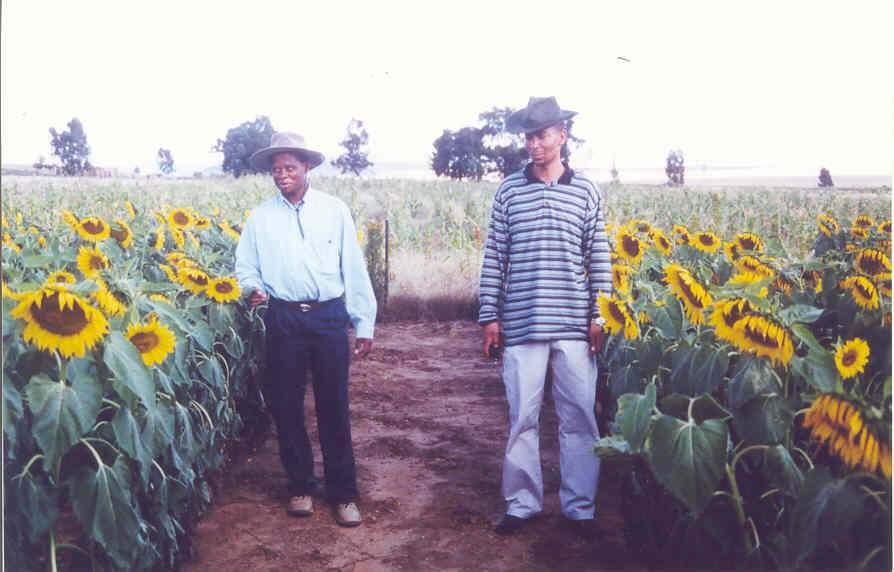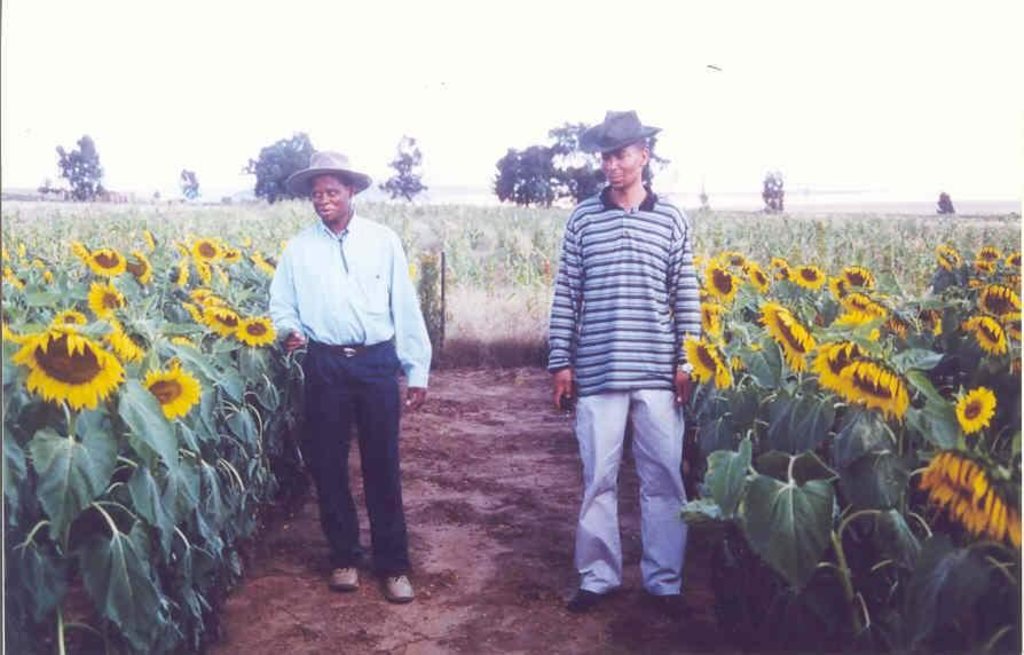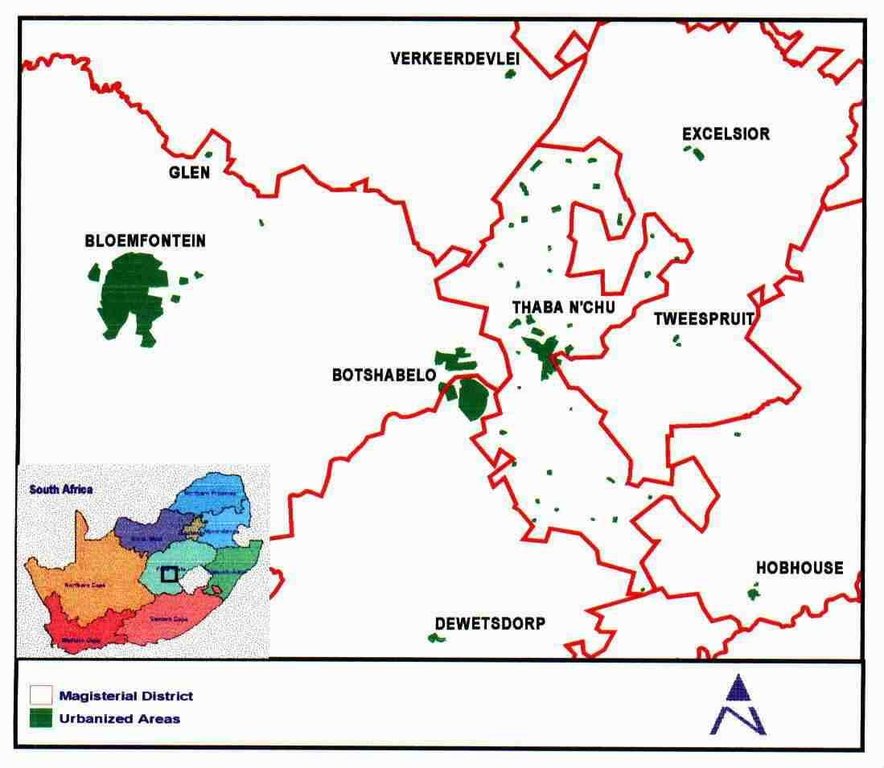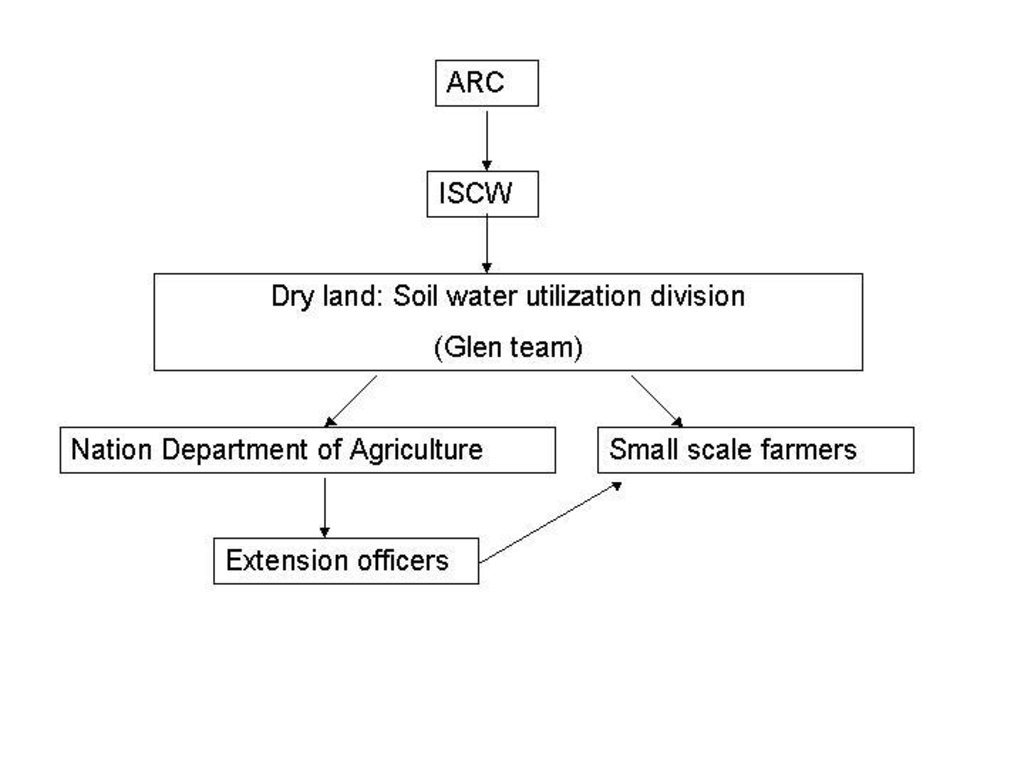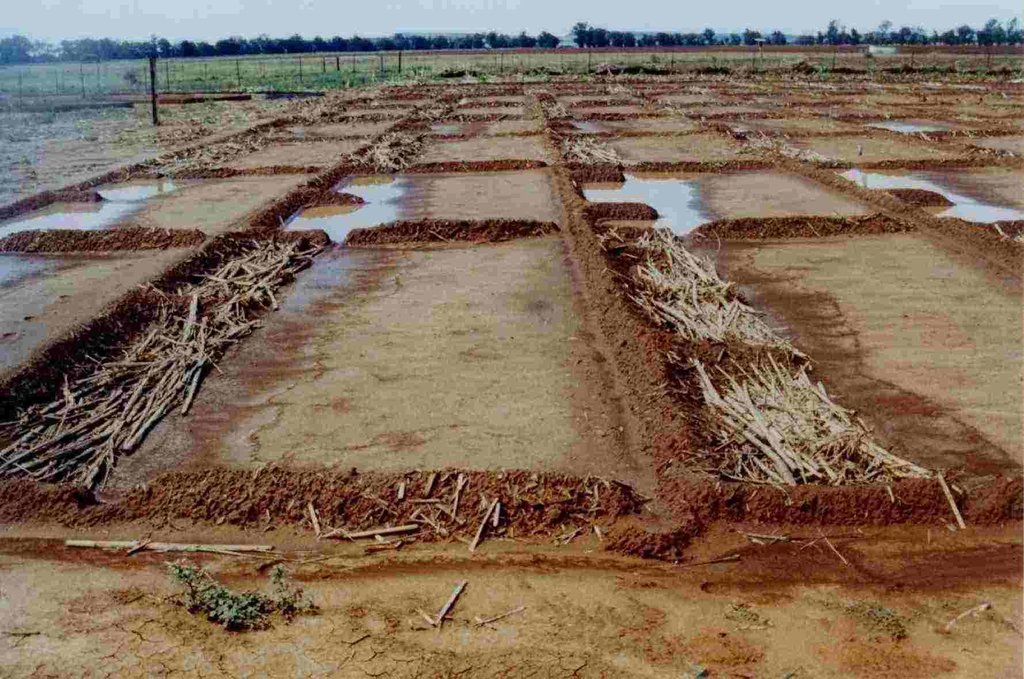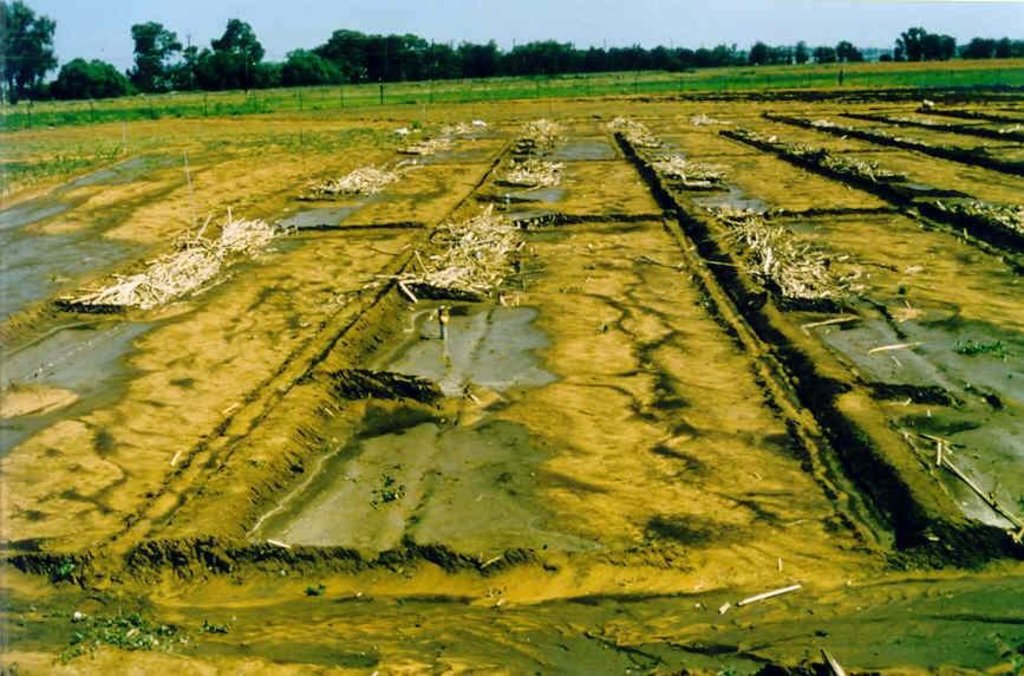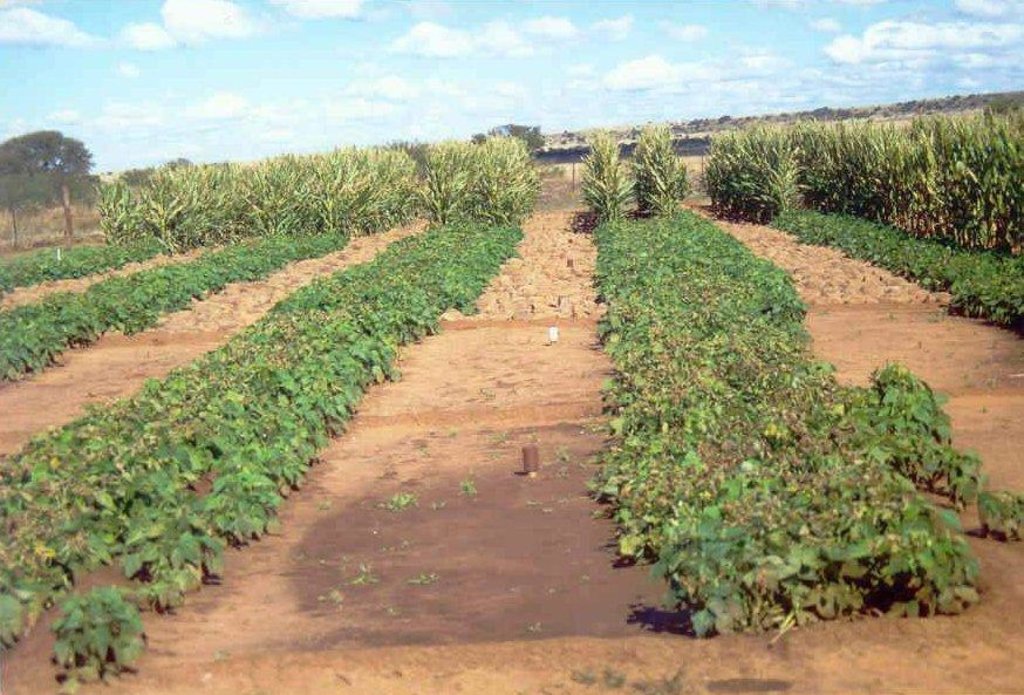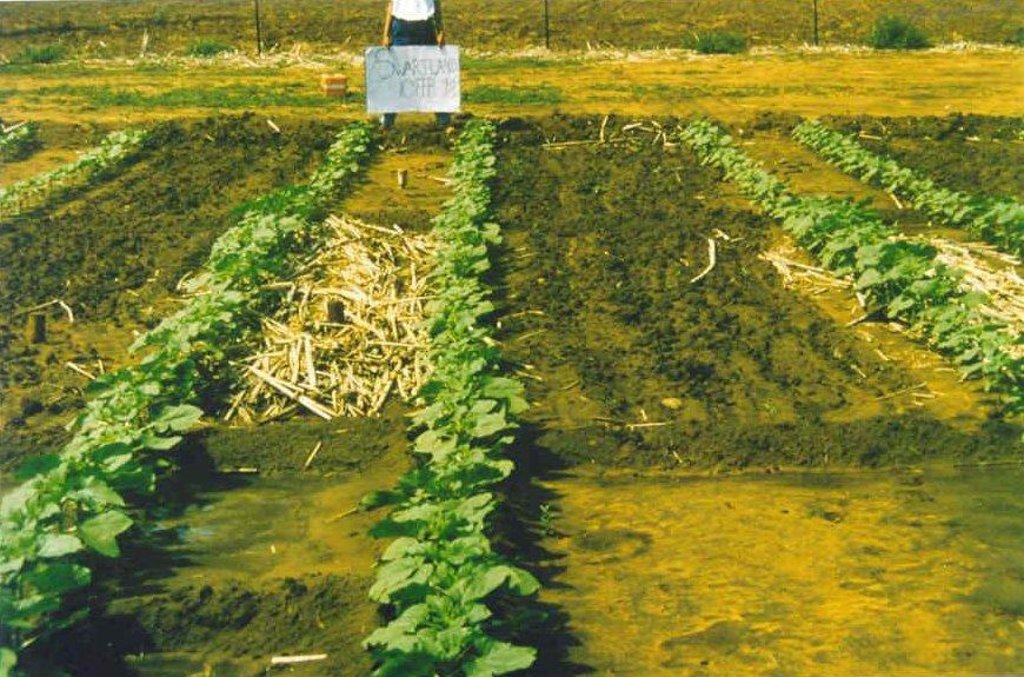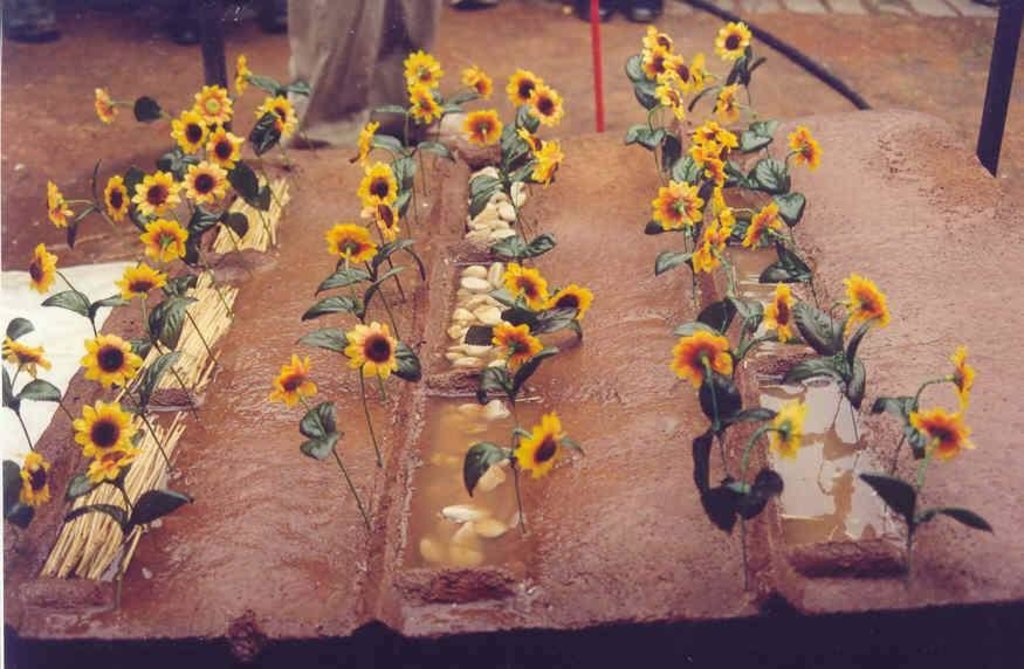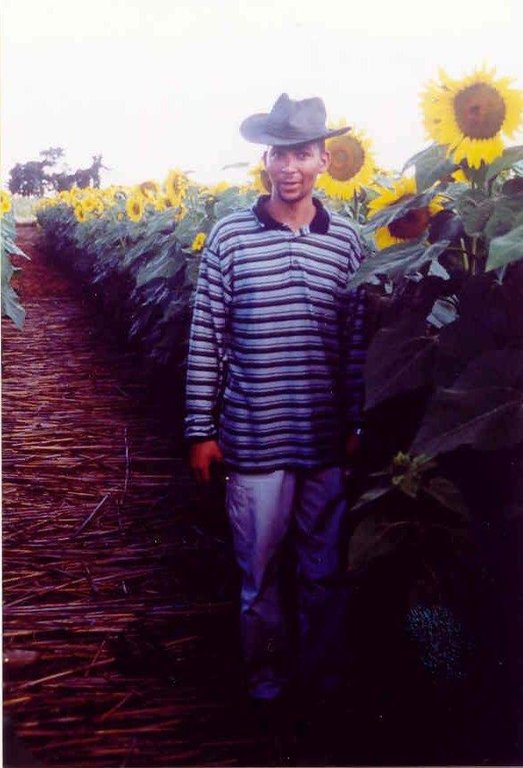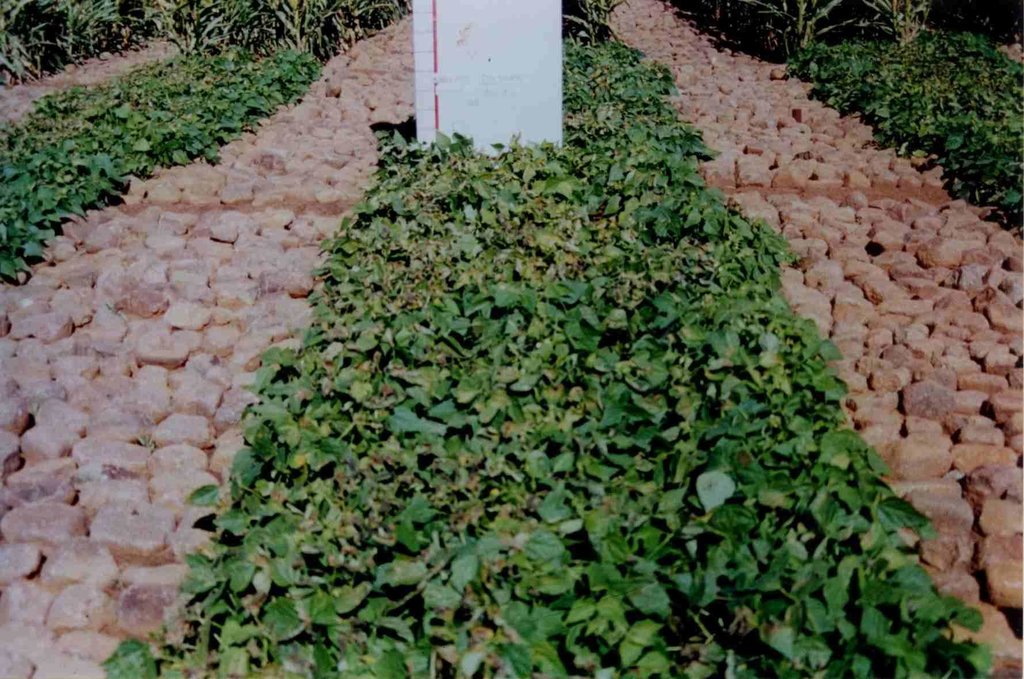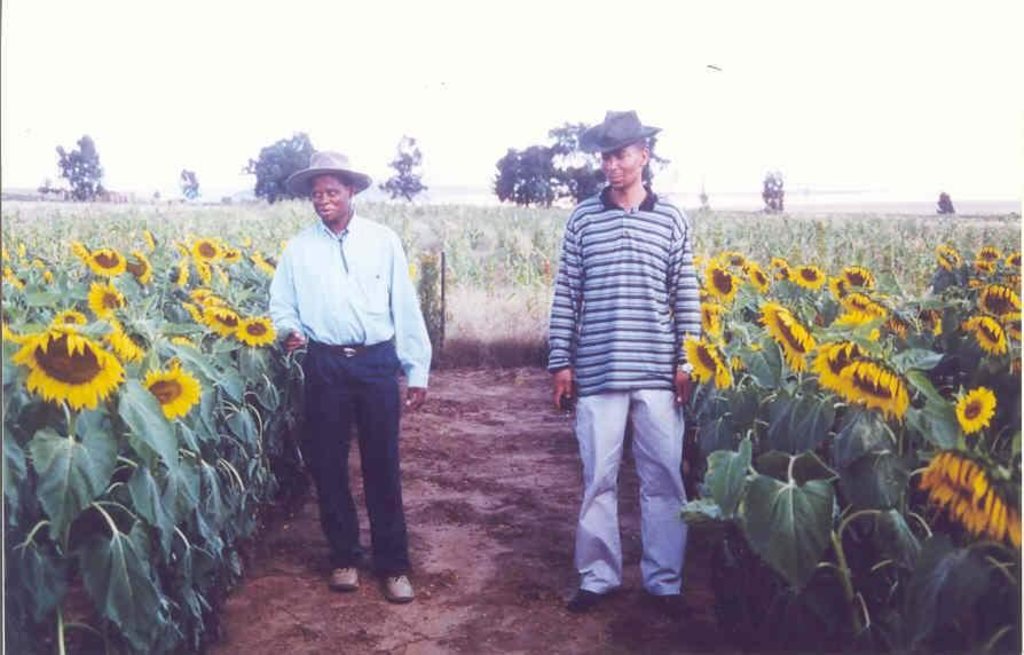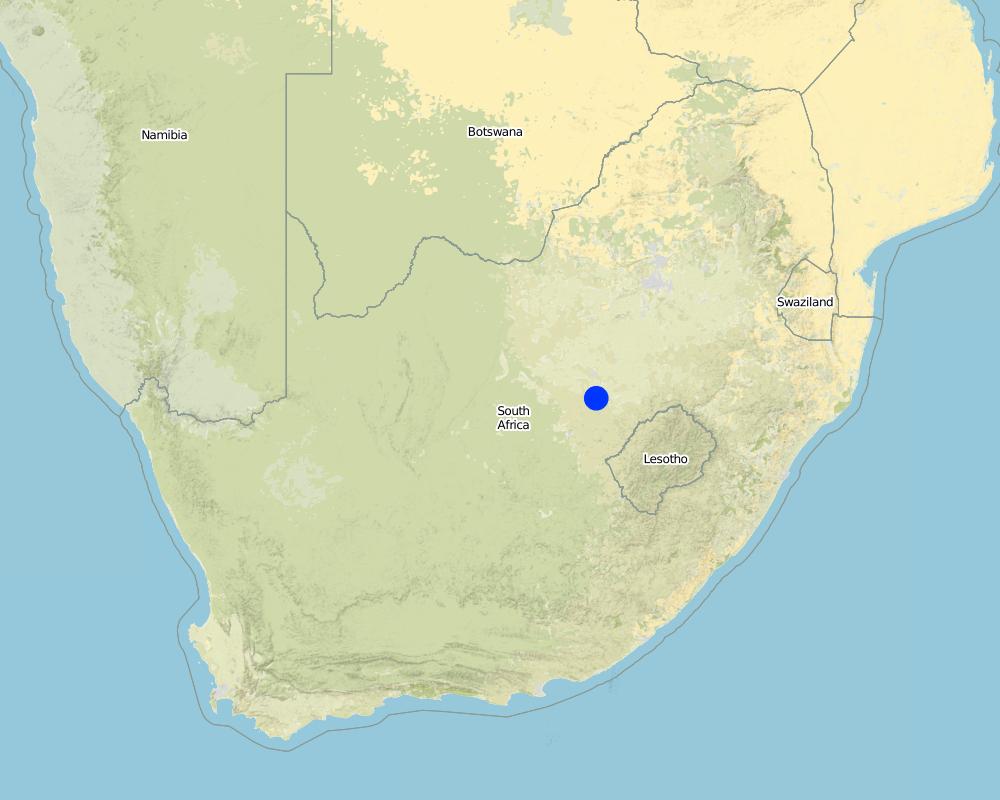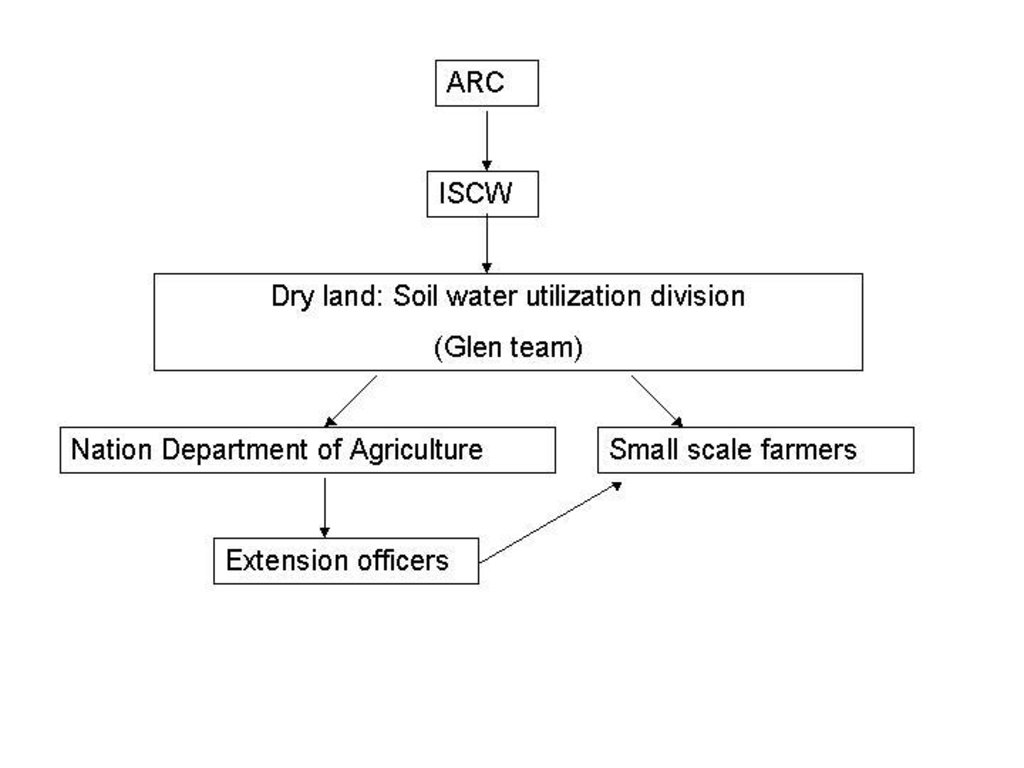Water Harvesting & Basin tillage (WHB) through demonstrations [ЮАР]
- Создание:
- Обновить:
- Составитель: Cobus Botha
- Редактор: –
- Рецензент: Fabian Ottiger
approaches_2336 - ЮАР
Просмотреть разделы
Развернуть все Свернуть все1. Общая информация
1.2 Контактные данные специалистов и организаций, участвующих в описании и оценке Подхода
1.3 Условия, регламентирующие использование собранных ВОКАТ данных
Составитель и ответственный/-ые специалист(-ы) согласны с условиями, регламентирующими использование собранных ВОКАТ данных:
Да
1.4 Ссылка (-и) на Анкету (-ы) по Технологиям УЗП
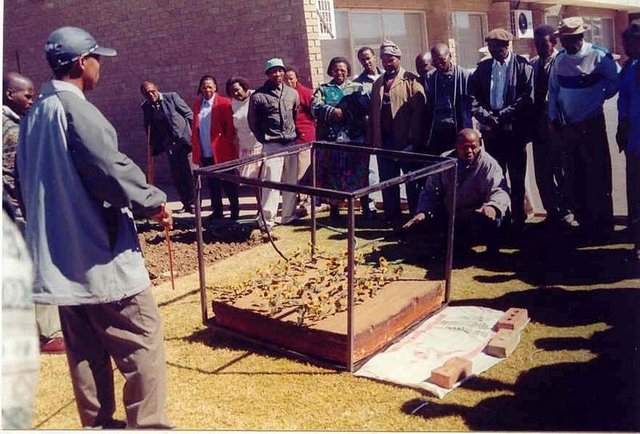
Water Harvesting & Basin tillage [ЮАР]
In-field water harvesting technique
- Составитель: Cobus Botha
2. Описание Подхода УЗП
2.1 Краткое описание Подхода
Optimising rainwater use, reduce runoff by use of basins and reduce evaporation losses by applying a mulch (stone/reeds) on the runoff strip and in the basins.
2.2 Подробное описание Подхода
Подробное описание Подхода:
Aims / objectives: Given the marginal soils of a clayey nature and/or slope terrain, coupled with erratic rainfall events, the technology aims to harvest available rain water and prevent runoff and soil loss. At present, PRAs are conducted in target areas and so far, people are eager to adopt the technology. The aim is to train them and assist in constructing the basins so that after a year they will be able to take over the project entirely even though the team will still be around to provide advice should the need arise.
2.3 Фотографии, иллюстрирующие Подход
2.5 Страна/ регион/ место, где применялся Подход
Страна:
ЮАР
Административная единица (Район/Область):
Free State
Map
×2.6 Даты начала и окончания реализации Подхода
Год начала реализации:
1996
Год окончания (Если Подход больше не применяется):
2002
2.7 Тип Подхода
- в рамках проекта/ программы
2.8 Каковы цели/ задачи Подхода
The Approach focused on SLM only (n/a)
*To make optimal use of pre-plant water that collects in basins from summer rains that fall during the fallow period. Saved water very beneficial during the reproductive growth of plants which often occurs when there is no rain.
*Prevention of soil and water loss through water erosion and runoff by the use of basins.
*Restriction of evaporation by the use of mulch. Straw is mostly preferred for its biodegradability although stone in comparative percentage cover is more effective.
The SLM Approach addressed the following problems: The target areas are marginal for crop production because of relatively low and erratic rainfall and dominantly clay soils on which the precipitation use efficiency is low because of high losses due to runoff and evaporation form the soul surface.
2.9 Условия содействующие применению Технологии/ Технологий в рамках Подхода или затрудняющие его
Социальные/ культурные/ религиозные нормы и ценности
- затрудняют
People are resistant to change. Had to convince that they can get better yields with new technique.
Treatment through the SLM Approach: Interacting with people as much as possible and comparing yields on farmers days after harvest.
Наличие/ доступность финансовых ресурсов и услуг
- затрудняют
Most can't afford inputs and to hire labour for construction of basins.
Treatment through the SLM Approach: Team will ask for discounts from providers and encourage team work amongst community.
Нормативно-правовая база (землевладение, права на земле- и водопользование)
- содействуют
The existing land ownership, land use rights / water rights greatly helped the approach implementation: Land owners have little deeds and no law inhibits them from actively participating in the project.
3. Участие и распределение ролей заинтересованных сторон
3.1 Заинтересованные стороны, участвующие в реализации Подхода и их роли
- местные землепользователи/ местные сообщества
Land owners and local chiefs. Approach can only be implemented with their acceptance and approval. Specific ethnic groups: Black, resource poor farmers
Women tend to be submissive and docile. They look up to the men for decision making.
- эксперты по УЗП/ сельскому хозяйству
- государственные власти (отвечающие за планирование или принятие решений)
- международные организации
ARC - ISCW
3.2 Участие местных землепользователей/ местных сообществ на разных стадиях реализации Подхода
| Участие местных землепользователей/ местных сообществ | Перечислите участников и опишите их вовлеченность | |
|---|---|---|
| инициирование/ мотивация | нет | rapid/participatory rural appraisal |
| планирование | нет | |
| выполнение | пассивное | casual labour |
| мониторинг/ оценка | интерактивное | |
| Research | нет | on-farm; On-station experiments are conducted at Glen to evaluate different SWC techniques. The new technology is transferred by means of on-farm demonstration plots and information days. |
3.3 Схема реализации (если имеется)
3.4 Принятие решений по выбору Технологии/ Технологий УЗП
Укажите, кто принимал решение по выбору применяемой Технологии/ Технологий:
- исключительно специалисты по УЗП
Поясните:
land user driven (bottom-up). Realisation of poverty.
Decisions on the method of implementing the SLM Technology were made by mainly by land users supported by SLM specialists. land user driven (bottom-up). The need of land users to alleviate poverty.
4. Техническая поддержка, повышение компетенций и управление знаниями
4.1 Повышение компетенций/ обучение
Проводилось ли обучение землепользователей/ других заинтересованных лиц?
Да
Укажите, кто проходил обучение:
- землепользователи
- extensionists/trainers
Тип обучения:
- опытные участки
- общие собрания
Рассматриваемые темы:
Construction of basins; better understanding of the system in simple terms; the concept of infiltration, evapotranspiration; erosion and runoff.
4.2 Консультационные услуги
Есть ли у землепользователей возможность получать консультации?
Да
Укажите, где именно оказываются консультационные услуги:
- в постоянно функционирующих центрах
Описание/ комментарий:
NDA Extension; Key elements: Assistance in technology transfer, Organising public meetings, Establishing & link between specialists and land users;
1) Advisory service was carried out through: government's existing extension system. Extension staff: mainly government employees
2) Target groups for extension: land users; Activities: Technology transfer
Advisory service is quite adequate to ensure the continuation of land conservation activities; With a little persuasion, they assist completely.
4.3 Институциональная (организационная) поддержка
В ходе реализации Подхода были ли организованы новые институциональные структуры или поддержаны уже существующие?
- да, немного
Укажите уровень, на котором структуры были укреплены или вновь созданы:
- местные
Укажите тип поддержки:
- повышение компетенций/ обучение
4.4 Мониторинг и оценка
Являются ли мониторинг и оценка частью Подхода?
Да
Комментарии:
bio-physical aspects were regular monitored through measurements
socio-cultural aspects were None monitored through measurements
economic / production aspects were None monitored through measurements
There were few changes in the Approach as a result of monitoring and evaluation: An organic mulch can be placed in the basins and on the runoff strip to stop evaporation losses. However cattle are allowed to graze in the land after the crop has been harvested. There after there is almost no organic mulch left to cover the soil surface. Stones were then suggested as an alternative mulch.
4.5 Научные исследования
Были ли научные исследования частью Подхода?
Да
Укажите темы исследований:
- социология
- экономика / маркетинг
- технология
Напишите подробнее и назовите тех, кто выполнял исследования:
Research was carried out both on station and on-farm
5. Финансирование и внешняя материальная поддержка
5.1 Годовой бюджет мероприятий по УЗП в рамках Подхода
Если точный годовой бюжет неизвестен, укажите примерный диапазон затрат:
- 100 000-1 000 000
Комментарий (например, основные источники финансирования/ ключевые доноры):
Approach costs were met by the following donors: national non-government (Water Research Commission): 100.0%
5.2 Финансирование и внешняя материальная поддержка, предоставляемая землепользователям
Предоставлялась ли землепользователям финансовая/ материальная поддержка для применения Технологии /Технологий?
Да
5.3 Субсидии на отдельные затраты (включая оплату труда)
- оборудование
| Укажите, какие ресурсы были субсидированы | В какой степени | Опишите субсидии подробнее |
|---|---|---|
| техника | профинансированы полностью | |
| инвентарь/ инструменты | профинансированы полностью | |
- сельскохозяйственные
| Укажите, какие ресурсы были субсидированы | В какой степени | Опишите субсидии подробнее |
|---|---|---|
| семена | профинансированы полностью | |
| удобрения | профинансированы полностью | |
| Biocides | профинансированы полностью | |
Если труд землепользователя был существенным вкладом, укажите, был ли этот вклад:
- за денежное вознаграждение
6. Анализ влияния и заключительные положения
6.1 Влияние Подхода
Сумел ли Подход помочь землепользователям внедрить и поддерживать технологии УЗП?
- Нет
- Да, немного
- Да, умеренно
- Да, существенно
N/A N/A
Did other land users / projects adopt the Approach?
- Нет
- Да, немного
- Да, умеренно
- Да, существенно
Team about to start a food security project adopting the WHB.
6.3 Долгосрочная устойчивость мероприятий в рамках Подхода
Могут ли землепользователи самостоятельно (без внешней поддержки) продолжать применение того, что было реализовано в рамках Подхода?
- да
6.4 Сильные стороны/ преимущества Подхода
| Сильные стороны/ преимущества/ возможности по мнению землепользователей |
|---|
| Produced higher yields. |
| Сильные стороны/ преимущества/ возможности по мнению составителя или других ключевых специалистов |
|---|
| Success of the WHB technique depends on suppressing water losses by runoff (R) and evaporation from the soil surface (Es). Measurements show that R has been reduced to zero and that Es has been reduced considerable, but still remains a serious avenue for water loss. (How to sustain/ enhance this strength: Future experimentation needs to focus on suppressing Es by any possible means.) |
| The WHB treatment gives considerably better yields than the conventional treatment. (How to sustain/ enhance this strength: Results from more seasons are needed to quantify the extent of this difference in a reliable way.) |
| Save on cultivation costs since no-till is employed. |
| The WHB technique is ell suited for use on very small pots, and even in townships. Many people in semi-arid areas could be usefully employed if this technique was widely adapted, and food security could be increased at the same time. (How to sustain/ enhance this strength: Extension work in this connection by the PSDA needs to be encourage.) |
| Soil loss from the land as a whole is zero. This is an important advantage over the conventional tillage in terms of sustainability. |
6.5 Слабые стороны/ недостатки Подхода и пути их преодоления
| Слабые стороны/ недостатки/ риски по мнению землепользователей | Возможные пути их преодоления/снижения? |
|---|---|
| It is labour intensive to initially construct the basins, by hand. |
| Слабые стороны/ недостатки/ риски по мнению составителя или ответственных специалистов | Возможные пути их преодоления/снижения? |
|---|---|
| There is some soil movement form the runoff area into the basins, ad basins may silt up over time. | |
| Huge storms may overflow and break basin walls; and basins may need some maintenance. | |
| In the case of small rainfall events all the water may not reach the basins. | |
| Organic mulch may act as a sponge and absorb some of the rainwater. |
7. Справочные материалы и ссылки
7.1 Методы сбора/источники информации
- выезды на места, полевые обследования
- опросы землепользователей
7.2 Ссылки на опубликованные материалы
Название, автор, год публикации, ISBN:
Optimising rainfall use efficiency for developing farmers with limited access to irrigation water, WRC Report No 878/1/00. Hensley, M; Botha, JJ; Anderson, JJ; Van Staden, PP & Du Toit, A. 2000Video 'In field Rainwater harvesting (1) Basic concepts to ensure agronomic and conservation sustainability in small scale farming'.The video illustrates the existing results obtained to enhance agronomic and conservation sustainability.
Где опубликовано? Стоимость?
R120. Leon van Rensburg, P/B X01, Glen, 9360. Debruint@glen.agric.za
Название, автор, год публикации, ISBN:
Optimising rainfall use efficiency for developing farmers with limited access to irrigation water, WRC Report No 878/1/00. Hensley, M; Botha, JJ; Anderson, JJ; Van Staden, PP & Du Toit, A. 2000
Название, автор, год публикации, ISBN:
Video 'In field Rainwater harvesting (1) Basic concepts to ensure agronomic and conservation sustainability in small scale farming'.
Ссылки и модули
Развернуть все Свернуть всеСсылки

Water Harvesting & Basin tillage [ЮАР]
In-field water harvesting technique
- Составитель: Cobus Botha
Модули
Нет модулей


